- Home
- Farley Mowat
Otherwise Page 8
Otherwise Read online
Page 8
In 1825, John Richardson, second-in-command of a Royal Naval expedition charged with making a land-based exploration of the coast of the central Arctic, was delayed at Fort Carlton for a few days while en route north. Typical of his kind and of his times, Richardson amused himself by wandering around shooting whatever creatures came within range. Among his trophies were two small mammals which, when sent to London, turned out to be unknown to science. British zoologists christened them Richardson’s Ground Squirrel and Franklin’s Ground Squirrel.
Europeans who later settled the prairies called them wood gophers and common gophers and, because those fed on grasses (including grains), stigmatized them as worthless vermin and spent enormous amounts of time and money trying to eradicate them.
For us, however, they had real commercial potential. Scientific collectors paid handsomely (and still do) for type specimens – topotypes they are called – and since nobody had collected topotypes at Fort Carlton since Richardson’s visit we hoped, as my journal attests, to make a killing there.
July 27: Our job is to get as many topotypes as we can. We go after them every day with guns and traps and snares. Frank even used most of the arsenic from our skinning kits in bait but the gophers that ate it probably died in their burrows. Anyhow we are getting so many that gopher carcases are in everything from the stew pot to bedrolls. And if anything stinks worse than a three-day dead gopher in hot weather I don’t want to know about it. We sometimes skin all night because it’s too hot in daytime with the temperature going as high as 107 degrees by noon. The worst was when Harris was trying to skin a big fat wood gopher that got so hot its intestines burst all over the skinning tent. Murray says he’ll never go fer a gopher again. I’m with him, even though that really is a lousy pun.
* Pilgrims of the Wild (1934), The Adventures of Sajo and Her Beaver People (1935), and Tales of an Empty Cabin (1936).
– 6 –
BEFORE THE STORM
Our next station was near Dundurn, some eighty miles south, where I had spent my bittersweet sixteenth birthday. Now, in early August of 1939, Murray Robb and I, accompanied this time by two new companions, again pitched our tent in the same magical place.
Although the Big Slough had become little more than a vast alkaline puddle it still nurtured abundant life. Around and beyond it the shortgrass prairie, including a military preserve and an Indian reservation, had escaped the settlers’ plows and so still provided a home to many of its original inhabitants, except buffalo, wolves, and prong-horned antelope, all of whom had been exterminated by modern man.
The survival of this oasis seemed something of a miracle. Not far from our camp stood a monumental example of the forces that had been deployed against it – an abandoned steam tractor almost as big as a turn-of-the-century locomotive, whose iron-cleated drive wheels ten feet in diameter and five feet wide had once provided traction to haul a gang plow capable of scalping fifty acres of native grassland every day.
Thirty years earlier this clanking invader had been mysteriously halted at the border of the Indian Reserve and had never moved again. Summer storms and winter blizzards had conspired to rust its mighty shafts and wheels into permanent immobility. It stood (and for all I know may still stand) as a monstrous testimonial to mankind’s relentless efforts to reshape the natural world.
Grain fields stretched to the horizon south and west of the dead monster. Seed planted in them that spring had sprouted, but the young stalks had grown only a few inches before drought withered them. To the north and east, however, the native prairie grasses had survived. Although a hot wind rippled through them, they bent before it and rose again when it had passed.
The south and west was now an incipient desert – a man-made one – while to the north and east lay a parched but living world in which Harris, Murray, and I assumed the role of the Grim Reaper.
With August drawing on, our time was running short so we decided to spend what remained to us ”investigating” a rolling plateau not far from the U.S. border. Straddling the boundary between Saskatchewan and Alberta, the Cypress Hills rise some two thousand feet above the surrounding prairies, achieving the highest elevation in mainland Canada between British Columbia’s Rocky Mountains and the Torngat peaks of Labrador. A fertile island in the prairie sea, the Cypress Hills once supported a verdant sprawl of pine, spruce, birch, and poplar copses that were home to an enormous assemblage of plants and animals.
Their survival and variety was due largely to the fact that all through the last great continental glaciation (which ended about twelve thousand years ago) the Cypress Hills miraculously remained ice-free, a haven for all living things. During the short time we had to prowl its high plateau, we found the bones of bison, the horns of big-horned sheep, a puma’s jaw, and part of the skull of what must have been one of the last of the Great Plains grizzly bears – now fabulous creatures who had still been at home here when the first Europeans arrived.
The Cypress Hills had also been a haven for aboriginal people. As late as the nineteenth century, when the Indians of what would become the western United States were being harried toward extinction, many came here seeking sanctuary. They did not always find it. In 1873, thirty-six Indians fleeing the U.S. Army’s genocide were massacred here by marauding American bounty hunters. But, in 1875 the Canadian government sent the newly formed Northwest Mounted Police to the Cypress Hills to build wooden-walled Fort Walsh as a bastion against American incursions. To the surprise of all concerned, Fort Walsh and its handful of defenders managed to do the job.
My journal has this description of our meeting with the successors of the NWMP upon our arrival at the Cypress Hills.
We set off from Dundurn in mid-morning and on through the night to Swift Current, before heading to Maple Creek, just north of Cypress Hills. What a weird country! Arid semi-desert for miles and miles of mostly abandoned farms doomed by the drought, then the land starts to roll as if a big sea was building under it, except the surface is covered with sage brush. Hardly any sign of living people. The hills got bigger and higher until suddenly we were in a pine forest. It smacks of the miraculous. Pine trees, and a cool breeze and even some green grass!
We didn’t think they would let us into Cypress Hills Provincial Park since we were collectors, but the park warden winked an eye. We set up camp then drove to a sparkling little clear-water lake we’d passed on the way in.
We were stripping off in the car for a skinny dip and were mostly naked as frogs when another car pulled up and four big guys hopped out. They were Mounties. A corporal came loping over, peered through the back window, saw some of our guns and let out a shout.
”They’re armed!”
At that they all pulled out revolvers and scurried for safety behind their car before ordering us to come out with our hands up.
We were kind of slow, being nude and not too amiable after driving all day and night. We lined up, looking like a bunch of skinned rabbits. There was nothing on us to search so they searched the car and hauled out guns and ammo. They told us we were under arrest because we were a bunch of bank robbers from Ontario trying to make a getaway to B.C.! They’d been looking for us, they said.
Frank and I dug out our collecting permits and all the other papers we could find and we tried to explain who we were. They just kept their revolvers pointed at us. Finally I told them Inspector Mundy of the R.C.M.P. in Saskatoon was a friend of my family and they should phone him. They let us get dressed but took the keys to the car and our guns and told us to stay in our camp till they came back. Which they did in about two hours. Inspector Mundy had vouched for me, but they were still suspicious and hung around asking more questions until I got out a mickey of Scotch whisky we were saving for a special occasion.
Soon thereafter Frank and I made an expedition of our own to the U.S. border, looking for a prairie dog town we had heard about.
Drove south over the Frenchman River Flats, the most desolate country I’ve ever seen. From its few hills we c
ould look pretty near as far as the border across a rolling yellow desert dotted with clumps of sage bush and not much else. Suddenly came upon a flock of birds as big as turkeys crossing the road. They were our first Sage Grouse. We brought down four and stowed them away to skin that night then we followed a cart track across the desert till it petered out. We set a course by the sun and bumped along until we reached the edge of a dry valley. Down below we could hear whistles and yelping as if a thousand puppies were on the loose. It took us an hour to find our way down to the ”dog town.” It consisted of some three hundred burrows, each marked by a cone of dirt two or three feet high, with a prairie dog (they look like small groundhogs) sitting perched on top of each, keeping an eye on us. Frank was desperate to collect some but every time he hit one it would drop down into its burrow and we’d lose it.
It was dusk before we gave up and coming upon another dirt track followed it although we had no idea where it went. Burrowing owls flitted ahead of us like giant bats. Then a coyote trotted across the track with a prairie dog in its mouth.
I jammed on the brakes and Frank grabbed his rifle as the car slewed to a stop. The coyote vanished into the sage brush, but dropped the prairie dog. Frank was delighted to get the specimen and I was happy the coyote escaped.
We eventually came to the small village of Val Marie, a ”one-elevator dump,” Frank called it, where we found an emaciated young coyote chained to a post in front of a gas station. Frank was desperate to get it for his collection, but I was determined to save its life – which I did with one of my last remaining dollars.
In deference to the array of sharp white teeth with which the pup warned all comers to keep their distance, I named him Fang. Although not aggressively hostile, within minutes of our arrival back at camp in the Cypress Hills he had validated the name by putting his mark on Murray for attempting to give him a patronizing pat on the head.
During our absence, Harris and Murray had collected the two rarest birds of the trip: a Bullock’s oriole and an Audubon’s warbler. They had also had a visit from the park warden, who warned them that the troubles in Europe were threatening to lead to war. We were not much disturbed by this news. Whatever might be happening overseas, we did not expect it to impinge upon our lives. Such was the extent of our innocence.
The summer of 1939 was now nearly at an end. We were almost broke, were a little homesick, and were very tired of our own cooking. So, on September 1, we set out for Ontario by a circuitous route that would take us into northern Wyoming to see the wonders of Yellowstone National Park.
On September 3 we stopped at a gas station near the Grand Canyon of the Yellowstone, and the fellow manning the pump saw from our licence plates that we were Canadians.
”You Canucks going off to war again, eh?” It was more of a statement than a question. ”I guess them English bastards given you your orders. Expect you’ll get your asses in a sling and it’ll serve you goddamn right! That’ll be two bucks thirty for the gas – and don’t give me none of your funny money.”
We abandoned our sightseeing shortly thereafter, not because we had seen enough but because our remaining money was all Canadian currency. In anticipation of Canada’s imminent destruction at the hands of the Nazis, most American stores and gas stations were refusing to accept our cash.
Driving by night and by day and living mostly on crackers and stolen fruit, we headed east through a miasma of hostility. Some Americans were actively sympathetic to the German cause and many were isolationists, as their refusal to join the Allies in the war until two years later would demonstrate. We became edgy, Fang edgiest of all, perhaps because he was being subjected to a meatless diet. He rode on the ledge under the rear window and I have a vivid memory of Harris’s expression as Fang leaned over his shoulder one day and snatched a banana out his hand – perhaps hoping to get the hand as well.
It was with considerable relief that, on September 6, we crossed the border at Windsor and regained our own country again.
Three days later, Canada declared war on Hitler’s New Order.
I returned to school determined to get good enough grades to let me become a professional biologist, but what I really wanted was to regain the limitless horizons of Saskatchewan after graduation.
I had much to do that winter, but still found time for the Others. Andy occasionally came out for a weekend of bird-watching, and Harris and I spent a lot of time tramping over fields and through woodlots, making countless small discoveries about the lives of the ”lesser beasts.” I tried to train Fang to come along for I was certain he would be able to show us many hidden things. It was not to be. Fang belonged to the wild. He hated being on a leash and one morning when I went to get him I found a gaping hole in the mesh of his enclosure.
Though I never saw him again, I did hear from him – as did many others. He took up residence in the Honey Pot, a swatch of unfarmable wooded ridges a few miles west of Richmond Hill. From there, when the moon and the mood were right, his laments sounded across the countryside. Reports of an invasion of wolves, ”the first to be reported since a wolf was killed here in the 1890s,” appeared in the local paper. Only Harris and I and a few fellow conspirators knew who the singer really was.
Late in 1940, a duet was heard from the Honey Pot hills. The sex of the newcomer was established the following summer when the singing from the Honey Pot swelled to a chorus of half a dozen voices, some of them quaveringly juvenile. It delights me now to realize that, even if only by accident, I helped bring the coyote to Ontario, where his kind are now firmly established and where I hope they will continue to prosper, despite all that human beings can do to put them under.
The end of 1939 was fast approaching and Andy, Frank, and Harris had all agreed to come along on a new expedition to Saskatchewan if I could organize it. However, I had not yet found financial support and, sensing that their commitments were weakening, I suggested a Christmas get-together in a semi-abandoned cabin a hundred miles north of Richmond Hill. I kept no journal of this but later wrote an account for a never completed book.
A cracked iron range billowed acrid smoke into the cabin, further dimming the flickering light from an oil lamp. The wind snoring across the burnished ice of the big lake had no trouble finding its way through the log walls.
It might seem a peculiar way for four town-bred eighteen-year-olds to be spending New Year’s Eve. Some of our more dashing contemporaries were at this very hour disporting themselves at Bill Beasley’s Esquire Club on Toronto’s waterfront. Others, more sedate or better heeled, were squiring their dates to a glittering prom at Casa Loma. Those who were neither rich nor dashing were partying at home or, if they lived in little towns like mine, swinging their partners around high school gym floors, sweating in the heat of adolescent sexual miasma.
”Time for a drink!” I cried.
Someone hauled a gallon jug of cider out from under the table and tilted it to fill our mugs. Alas, the cider had turned to frozen mush that had to be tickled out of the jug with a fork.
”Music, maestro!” shouted Andy.
I fiddled with the knobs of a battered Stromberg-Carlson radio whose battery was almost dead, or almost frozen. Through a blur of static I could only get a thread of band music, barely recognizable as Tommy Dorsey playing ”Smoke Gets in Your Eyes.” We began to sing along – with feeling – as the wind bellowed across the lake blowing smoke down the tin chimney until we could hardly see each other.
When the music lost itself in static I spun the dial, and suddenly a clear, calm, male voice broke through:
… report several German aircraft shot down over Alsace-Lorraine … At sea, German activity has increased but the Royal Navy is countering … On the ground in France only patrol activity has been reported on this, the last day of 1939… We return you now to the ballroom of the Royal York Hotel here in Toronto where, in just five minutes, we will welcome the New Year….
Five minutes later we four linked arms around a rickety old table, raised our
mugs of icy cider, drained them to the bottom, and joined the distant revellers in singing ”Auld Lang Syne.”
And never realized that not only were we bidding adieu to the year just passed, but that this was a final farewell to the last hours of our unfettered youth.
– 7 –
WAR DRUMS
Despite the fact that there was a war on, the outlook for 1940 seemed reasonably bright to me. The initial gloom cast by the outbreak of hostilities had largely dissipated as the situation overseas stagnated into what came to be known as the Phony War. Except for bombings by the Luftwaffe, the Germans appeared to be content to sit tight behind their borders. Nor were the Allies inclined to provoke them. Many people actually thought Hitler would make peace with France and Great Britain, or at least arrange an armistice with them in order to free the fascist forces for a massive assault upon the Soviet Union. Many resolutely neutral Americans would have been happy to have seen this happen and might even have supported the Nazis in a crusade against Godless Communism.
The jobs and money so suddenly produced by a war economy fostered a feeling of optimism in Canada that my father did not share. The Hastings and Prince Edward Regiment (a rural south-central Ontario peacetime militia unit in which he held a captaincy) had mobilized for active service in mid-September of 1939, and Angus had ever since been trying to find an active role for himself in this new struggle for world dominion. Despite having lost the use of his right arm, Angus yearned to be a warrior again. To prepare the way, he had finally given my mother what she most desired. In November 1939, he had actually bought a comfortably aged house in Richmond Hill, where he could leave her when he went off to battle.

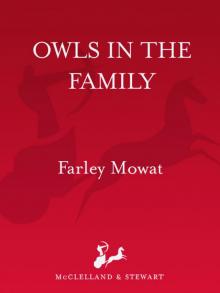 Owls in the Family
Owls in the Family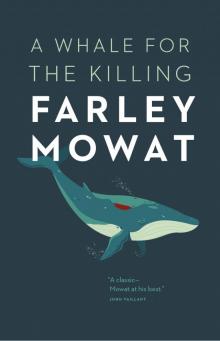 A Whale for the Killing
A Whale for the Killing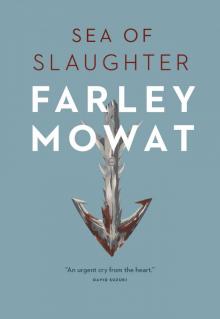 Sea of Slaughter
Sea of Slaughter The Curse of the Viking Grave
The Curse of the Viking Grave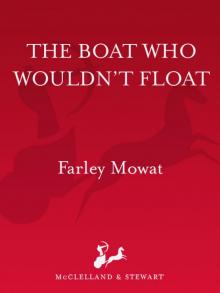 The Boat Who Wouldn't Float
The Boat Who Wouldn't Float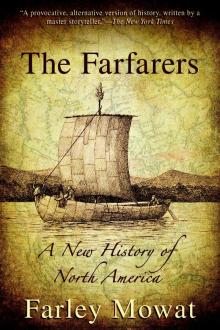 The Farfarers: Before the Norse
The Farfarers: Before the Norse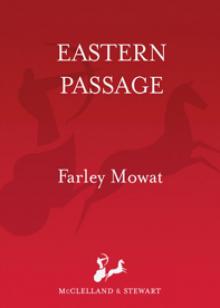 Memoir
Memoir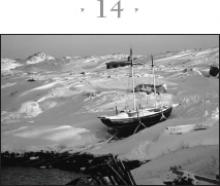 Bay of Spirits: A Love Story
Bay of Spirits: A Love Story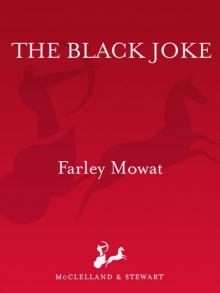 The Black Joke
The Black Joke Sibir: My Discovery of Siberia
Sibir: My Discovery of Siberia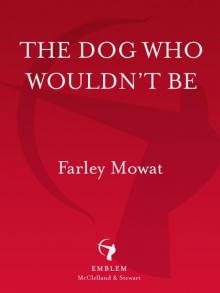 The Dog Who Wouldn't Be
The Dog Who Wouldn't Be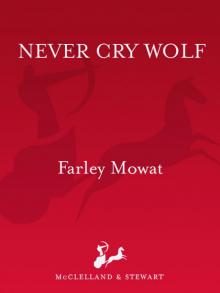 Never Cry Wolf
Never Cry Wolf And No Birds Sang
And No Birds Sang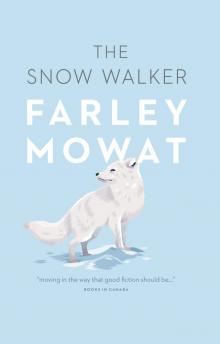 The Snow Walker
The Snow Walker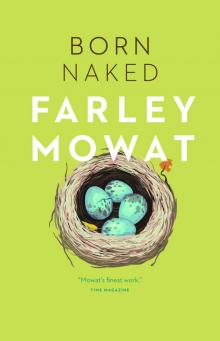 Born Naked: The Early Adventures of the Author of Never Cry Wolf
Born Naked: The Early Adventures of the Author of Never Cry Wolf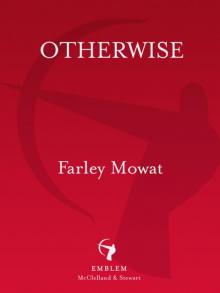 Otherwise
Otherwise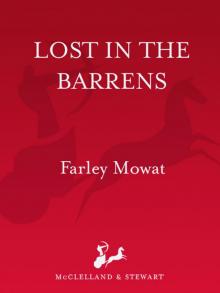 Lost in the Barrens
Lost in the Barrens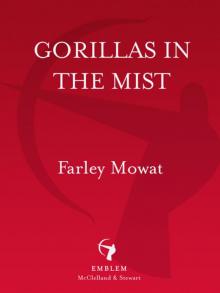 Gorillas in the Mist
Gorillas in the Mist People of the Deer
People of the Deer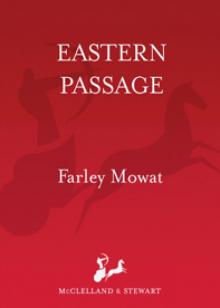 Eastern Passage
Eastern Passage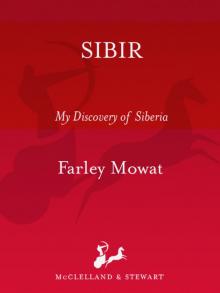 Sibir
Sibir The Farfarers
The Farfarers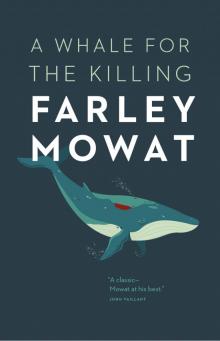 A Whale For The Killing (v5.0)
A Whale For The Killing (v5.0)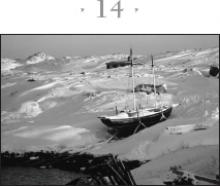 Bay of Spirits
Bay of Spirits And No Birds Sang (v5.0)
And No Birds Sang (v5.0)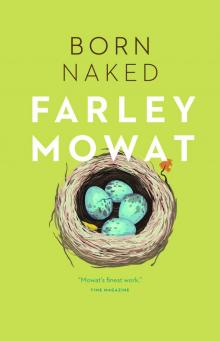 Born Naked
Born Naked